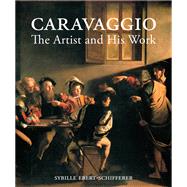Caravaggio

Caravaggio
- ISBN 13:
9781606060957
- ISBN 10:
1606060953
- Format: Hardcover
- Copyright: 06/05/2012
- Publisher: J Paul Getty Museum Pubns
Rent
Sorry, this item is currently unavailable.
Note: Supplemental materials are not guaranteed with Rental or Used book purchases.
Extend or Purchase Your Rental at Any Time
Need to keep your rental past your due date? At any time before your due date you can extend or purchase your rental through your account.
Summary
The young Michelangelo Merisi da Caravaggio (15711610) created a major stir in late-sixteenth-century Rome with the groundbreaking naturalism and highly charged emotionalism of his paintings. One might think, given the vast number of books that have been written about him, that everything that could possibly be said about the artist has been said. However, the author of this book argues, it is important to take a fresh look at the often repeated and widely accepted narratives about the artist's life and work. Sybille Ebert-Schifferer subjects the available sources to a critical reevaluation, uncovering evidence that the efforts of Caravaggio's contemporaries to disparage his character and his artwork often sprang from their own cultural biases or a desire to promote the artistic achievements of his rivals. Contrary to repeated claims in the literature, the painter lacked neither education nor piety, but was an extremely accomplished technician who developed a successful marketing strategy. He enjoyed great respect and earned high fees from his prestigious clients while he also inspired a large circle of imitators. Even his brushes with the law conformed to the behavioral norms of the aristocratic Romans he sought to emulate. The beautiful reproductions of Caravaggio's paintings in this volume make clear why he captivated the imagination of his contemporaries, a reaction that echoes today in the ongoing popularity of his work and the fierce debate that it continues to provoke among art historians.






